This basic difference of opinion came to the fore only once, when Gisevius tried to persuade Halder to strike immediately rather than wait for an opportune moment. Halder was as convinced as Gisevius that Hitler meant war but insisted nevertheless on proof; he was incensed by Gisevius’s suggestion that evidence of these plans and countless further indications of the regime’s hideous nature could easily be obtained by seizing Gestapo and SS files. Gisevius believed that it was preferable to attack the regime on criminal grounds rather than on political ones and to produce “a few dozen airtight arrest warrants” rather than all sorts of tortuous political rationales. No army officer worth his salt, in Gisevius’s view, could resist a command to restore order in the face of murder, illegal confinement, extortion, and corruption. To advance moral and political rationales would simply invite a lengthy debate over the legality of the coup.
This proposal, and indeed Gisevius’s entire attitude, struck Halder as far too adventurist, smacking more of mutiny and unsoldierly willfulness than of responsible action. Under no circumstances would he lend the army to such an operation. Only when Hitler issued orders to attack, thereby revealing himself to the public as the “criminal” that Halder had long considered him to be, could the signal for a military putsch be issued. A few days later an impatient Gisevius accompanied Hjalmar Schacht uninvited to a meeting Schacht had arranged at Halder’s apartment. He hoped to urge his plan on the chief of the general staff once again, but Halder lost all patience and thereafter refused to receive Gisevius. 25
Soon afterwards Halder asked Oster to work out a detailed plan for a coup, and with Oster’s participation the rather aimless and rancorous activities of the conspirators gained a focal point and took on a more concrete shape. The web of conspirators grew rapidly and many loose ends were tied up, creating a much more solid organization. Halder made contact with Ernst von Weizsäcker-although direct communications between the Foreign Office and the general staff were explicitly forbidden-and with Wilhelm Canaris, the chief of Military Intelligence. In August Halder met in Frankfurt with Wilhelm Adam, the commander in chief of Army Group 2. Both men were concerned that Hitler was headed for war. When Halder “abruptly” stated that if Witzleben, the commander of the Berlin military district, were to “strike, the commanders in chief of the Reich would have to go along with him,” Adam replied, “Go ahead, I’m ready.” 26Then, on September 4, Halder met with Schacht, who agreed to become provisional head of the new government in case of a successful coup. At the same time, Halder was in contact with Oster, Oster with Gisevius, Gisevius with Schulenburg, and virtually everyone with everyone else in a continuous round of discussions, to plan movements during the coup and to coordinate and review possible scenarios. Witzleben visited Schacht at his country estate near Berlin, parting with the comment that this time they would go all the way. 27
In the meantime Witzleben had won over to the cause a subordinate of his, Count Walter Brockdorff-Ahlefeldt, commander of the Potsdam Division. This unit was regarded not only as a “model division” but it was also the strongest military force in the Berlin area and therefore crucial to the success of the coup. Halder arranged to have the First Light Division, commanded by Erich Hoepner, which was on maneuvers in the border region between Thuringia and Saxony, put on alert to block the path to Berlin of SS-Leibstandarte Adolf Hitler, the SS troop that acted as Hitler’s bodyguard. Just before midnight on September 14, after all operations had been spelled out yet again-especially the plans to seize police stations, radio transmitters, telephone installations, repeater stations, the Reich Chancellery, and key ministries as rapidly as possible-and after Brockdorff-Ahlefeldt had personally inspected all pivotal positions, including even the transmitters in Königs-Wusterhausen near Berlin, Witzleben declared all military preparation completed for a coup. 28
One major question was what to do with Hitler himself. Gisevius and a small group of predominantly younger conspirators felt that he should he killed without further ado. Witzleben, Beck, and most of the other conspirators, including Canaris, who was on the fringes of this attempt, believed that Hitler should be arrested and put on trial. By using the legal system to expose the crimes of the regime, they hoped to avoid either making a martyr of Hitler or igniting a civil war. Halder pointed out that it was not the moral judgments of the elite that counted but the support of the general population, most of which was still very much in thrall to the Hitlerian myth. Hans von Dohnanyi and Oster argued that after Hitler was arrested he should be brought before a panel of physicians chaired by Dohnanyi’s father-in-law, the celebrated psychiatrist Karl Bonhoeffer, and declared mentally ill. Halder, for his part, hesitated. He was not opposed to eliminating Hitler, he informed his fellow conspirators, but under the circumstances he did not approve of murdering him in the open- perhaps an accident could be arranged, or they could pin the assassination on a third party. The radicals among the conspirators, who had always considered Halder indecisive, felt their doubts about him confirmed, and they began to fear for the operation, especially since the chief of general staff had explicitly reserved to himself the right to issue the order for the coup. Witzleben stated that if necessary he would take action without orders from above, cordoning off the former quarters of the Ministry of War and army headquarters and putting Halder and Brauchitsch “under lock and key during the crucial hours.” 29
Around September 20, the innermost circle of conspirators met in Oster’s apartment for a final conclave: Witzleben, Gisevius, Dohnanyi, and probably Goerdeler, as well as Captain Friedrich Wilhelm Heinz and Lieutenant Commander Franz Maria Liedig. Heinz and Liedig had recently been asked to assemble a special task force, whose precise mission the assembled group now determined. When Halder issued the signal for the coup, the task force, under Witzleben’s command, was to overpower the sentries at the main entrance to the Reich Chancellery at 78 Wilhelmstrasse, enter the building, neutralize any resistance, especially from Hitler’s bodyguards, and enter Hitler’s quarters. The Führer would then be arrested, the conspirators agreed, and immediately transported by automobile to a secure location.
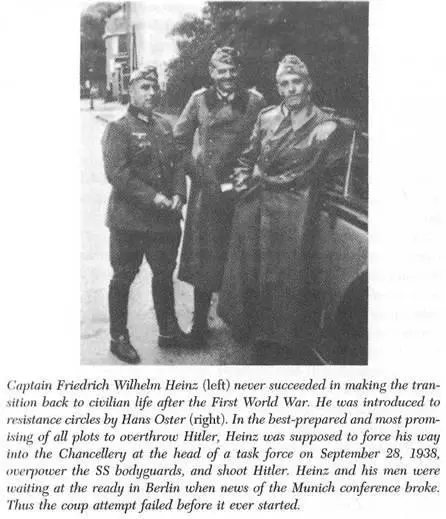
Oster had arranged for Heinz to come to the meeting with Witzleben. Molded by his experiences in the Great War, Heinz, like many of his counterparts, had never felt at ease in civilian life and had continued to live by military habits. Initially a member of the Ehrhardt Freikorps, a private army formed after the First World War, he was swept up by the mood of romantic-revolutionary nationalism and joined the Stahlhelm, the paramilitary association that provided a home for restless members of the political right during the days of the much-hated republic but that, like all other political organizations, was dissolved in the great Gleichschaltung of the fall of 1933. Through his many connections with comrades from those days, and with Oster’s help, Heinz managed to assemble a commando of about thirty rough, brash young officers, students, and workers trained in the use of firearms.
Witzleben had scarcely left Oster’s apartment when the remaining conspirators expanded the plot in one key way. Heinz argued that it would not suffice simply to arrest Hitler and put him on trial. Even from a prisoner’s dock, Hitler would prove more powerful than all of them, including Witzleben and his army corps. Heinz’s arguments seemed to strike home. In the wake of the nationalistic euphoria over Austria’s “return” to the Reich, Hitler’s position was stronger than ever; the regime’s propaganda machine had succeeded in portraying the Führer as the stalwart champion of the national interest. It was only the malevolent or corrupt forces in his entourage, according to some critical voices, who occasionally led him astray. Heinz therefore argued that it was essential to engineer a scuffle during the arrest and simply shoot Hitler on the spot.
Читать дальше
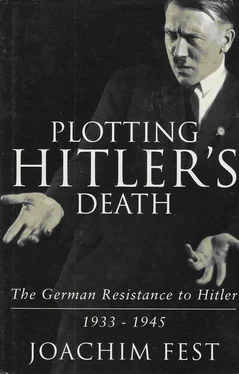

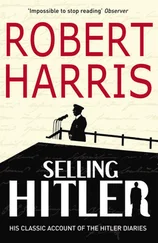
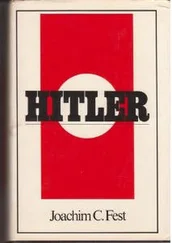
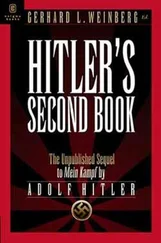
![Traudl Junge - Hitler's Last Secretary - A Firsthand Account of Life with Hitler [aka Until the Final Hour]](/books/416681/traudl-junge-hitler-s-last-secretary-a-firsthand-thumb.webp)







